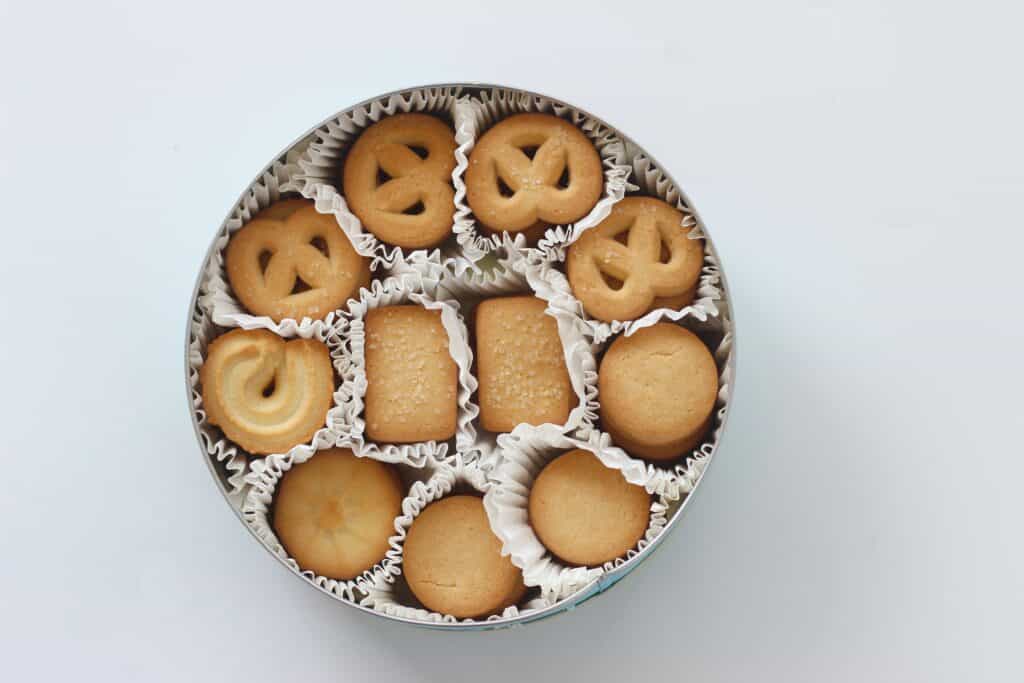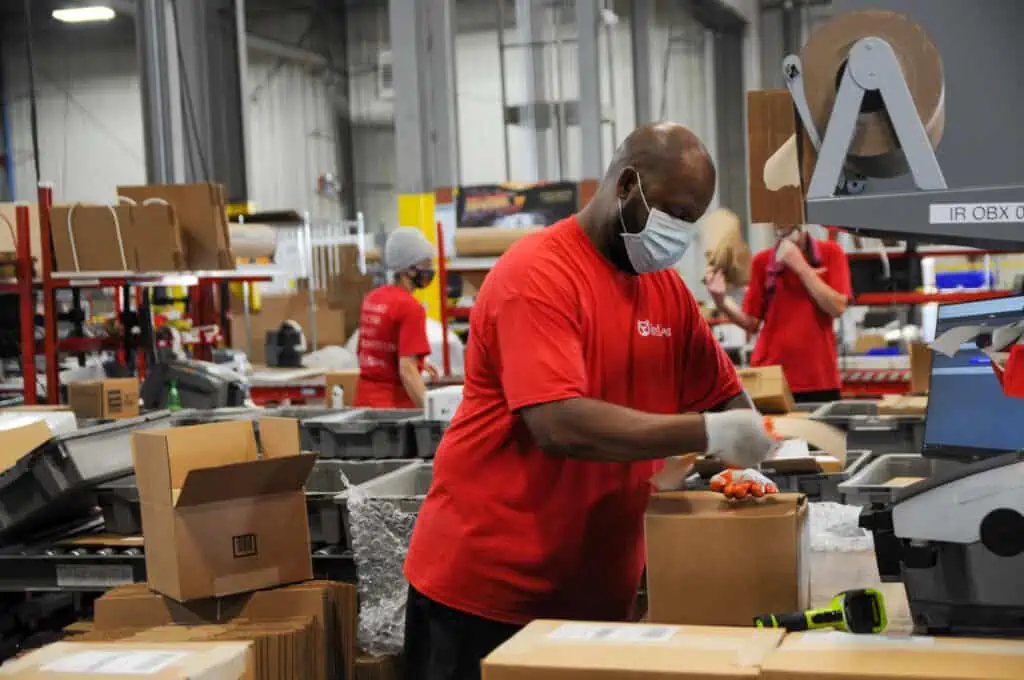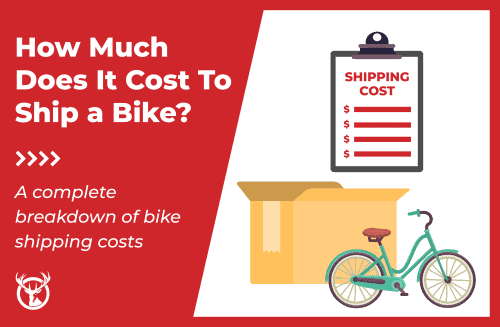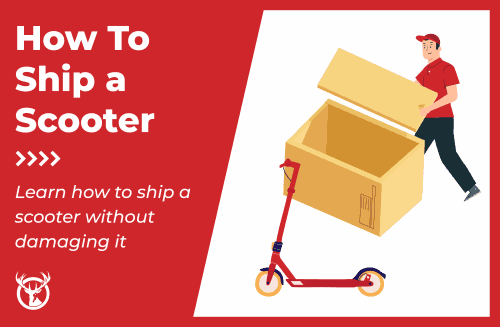A box of cookies can be a sweet treat for anyone during the holidays or at any time of year. Whether you own a bakery or want to send homemade cookies to your loved ones, getting delicate cookies to someone’s doorstep in one piece is challenging. The way you package cookies can literally make or break your shipment, so we’ve created a guide on the best way to ship cookies.

You can ship any kind of cookie, but some will do better in the shipping process than others, and some might require more packaging to survive the journey.
Chewy or soft cookies ship well, as long as they are packed well and not crumbly. Sturdy bakes like gingerbread cookies, shortbread, bar cookies, or sandwich cookies can also ship well, as long as they are hard but not brittle. Sturdy, cookie-adjacent baked goods such as brownies, blondies, or biscotti may also do well in transit.
Cookies with gooey centers are a challenge because they may end up stuck together. However, a bit of careful packing and parchment paper can fix that.
If your bake requires refrigeration, that adds a significant level of difficulty, but it’s not impossible to ship perishable goods through the post office or other shipping services.

Cookies are delicate treats that need an overpack method, whether you’re sending Christmas cookies to a friend or doing eCommerce fulfillment for a commercial bakery. Overpack shipping is putting an extra box around your cookie tin for an additional layer of protection. Using outer boxes to create layers of protection helps delicate cookies make it to their destination undamaged.
Beyond overpacking, there are several methods of packing cookies. Here are two options that will keep your ginger snaps crispy and sprinkles in place on your holiday cookies.
The cookie tin method
When you pack cookies in a metal cookie tin, you give your treats a little extra protection in transit. The metal box will keep your care package from getting smashed, but you need to use proper packing materials inside the tin to protect your goodies from breakage.
Layering the inside of your box with wax paper is a great way to keep your cookies separate while adding a little cushion. You can also use tissue paper or parchment paper for a festive touch. Before arranging your cookies in the tin, put a layer of parchment paper or other protective paper on the bottom so they don’t bang against the metal.

Pack your cookie tin tightly with wrapped cookies so they don’t have room to move around. Cookie tins work well for firm treats such as sugar cookies. Be careful when packing soft cookies or treats that can melt into each other like chocolate chip cookies; if you pack these too tightly, you might smush them. If there’s any extra space, add some wadded-up paper as extra cushioning to prevent your tasty treats from being jostled around during their trip.
The plastic bag method
Another cookie wrapping option is individual plastic bags. Plastic bags work well for cookies that might melt or sweat through paper. Pack your bagged cookies into a box at an angle and choose a container that’s just big enough to hold your care package, with a little room to spare (or add tissue paper as infill). Individually wrapping your cookies works well to keep the flavors from assorted cookies from mixing. For example, you wouldn’t want your lemon cookies to have a slight taste of chocolate chip cookie — or vice versa!

Which of these methods is the best way to ship cookies? It depends on the kind of cookie you’re mailing, the time of year (whether your cookies will be exposed to extreme heat or cold), and what carrier you use to send your package.
Once you’ve figured out which method works best for you, place your carefully packed cookie container into an outer shipment box. Be sure to pick a box sturdy enough to withstand the shipping process. Before you tape it up and send your package out, add infill, like packing peanuts, packing paper, or cardboard pieces, to fill the space between your cookie tin and your shipping box so there’s no jostling during transit.
It’s a good idea to label your box as perishable so the carrier knows it needs to be delivered quickly. You might also want to write “fragile” on the outside of the box so it won’t get stacked under heavy items in the back of the delivery truck.
The right carrier for shipping cookies depends on your shipping volume and how fast you need it to arrive. Consider express shipping options to get your cookies to your loved one, friend, or even customer while they’re still crispy (or chewy). FedEx has instructions on shipping perishables, and UPS has a cookie shipping guide. Freezing may be a good option to preserve some delicate cookies that might not survive shipping at room temperature.
USPS is an excellent option for one-time cookie shipments and regular deliveries of baked goods. Its Priority Mail service provides fast delivery, and the flat rate Priority Mail boxes are sturdy enough to protect well-wrapped cookies.

The best way to ship cookies depends on your volume. If you like to send packages of homemade cookies to friends during the holiday season, the instructions in this post will help you do it without breakage or spoilage. However, for commercial food businesses, a fulfillment company certified to handle food products is an excellent option. You improve safety and ensure your deliveries reach their destinations safely when you put your logistics into the hands of experts.
If you have questions about shipping food products, fragile items, or just about anything else, you can look to Red Stag Fulfillment for answers. We’re always just a call away.
Here are more helpful How to Ship articles:
Can you ship cookies?
Yes. You can ship cookies by USPS, UPS, FedEx, and other delivery services. Just be sure to package them carefully to prevent breakage and choose the shipping service level that will get your goodies to their destination before they spoil.
How to ship cookies without breaking
To ship cookies without breaking, follow these tips:
- Pack them in a cookie tin or other sturdy box or container to prevent crushing during transit.
- Put cookies back to back and wrap them in tissue or another protective packaging.
- Use an outer box for an extra layer of protection.
- Use infill to pack your cookies securely (but not too tightly) so they don’t shift during shipping.
How to ship decorated cookies
If you’ve got fancy cookies with royal icing, sprinkles, or other decorations, they’ll require special care to arrive looking as beautiful as you intended. Use cellophane or plastic bags to seal each cookie individually, and use extra padding such as bubble wrap between layers of cookies in your box.
How to ship baked goods UPS
UPS recommends its Simple Rate service, which offers flat-rate shipping services for small boxes in the U.S. With Simple Rate, you can choose next-day, second-day, three-day, or five-day delivery. Your shipping cost will depend on the size of the box and the shipping speed you choose.
And, of course, the best way to ship cookies via UPS is with care. Check out the UPS guide to shipping cookies for more packaging tips.
How much does it cost to ship cookies?
Expect to pay a premium for shipping cookies because they are a perishable item. Use Priority Mail, Express Mail, or other express shipping services so your package arrives within a few days of shipping.












